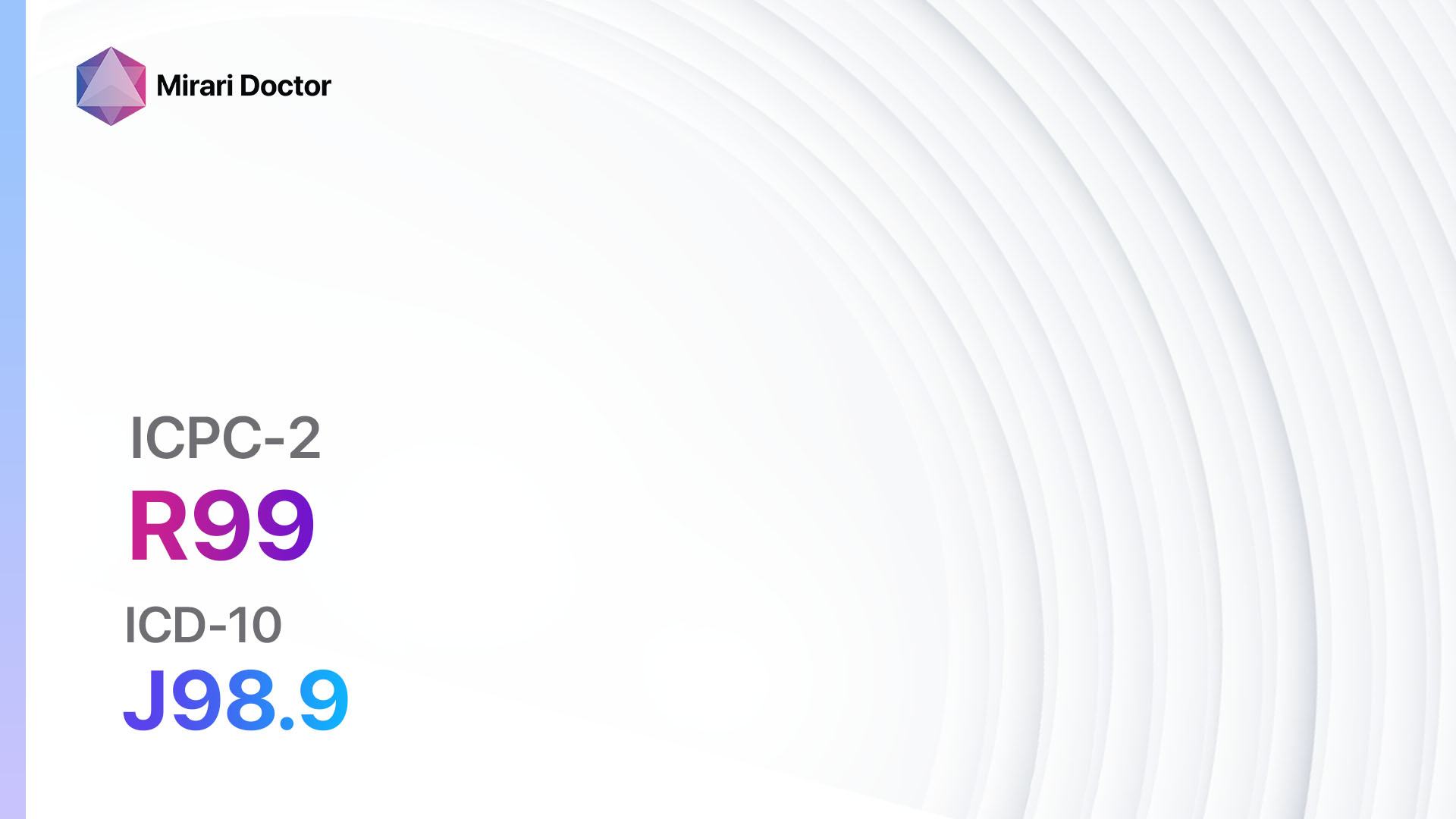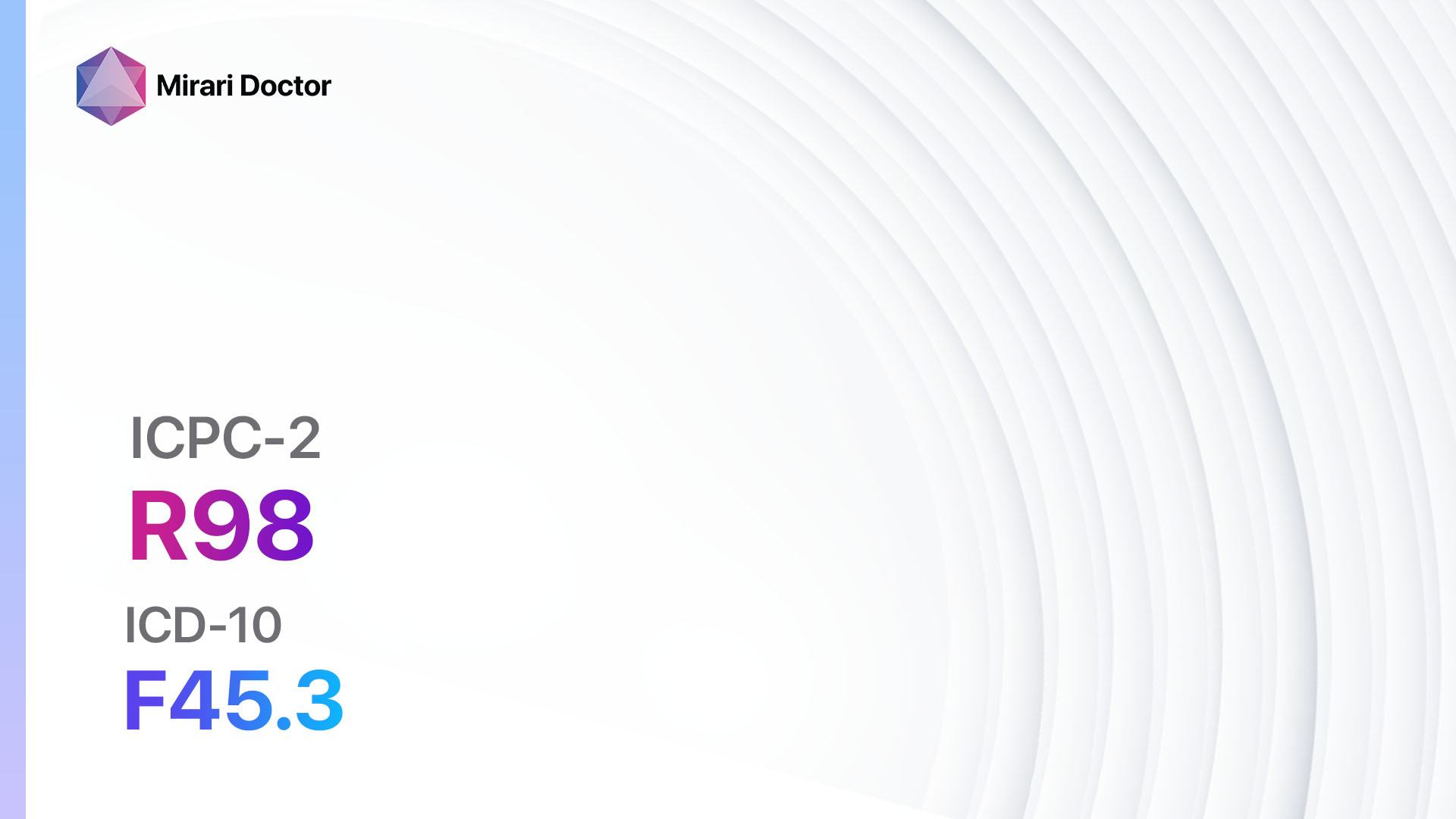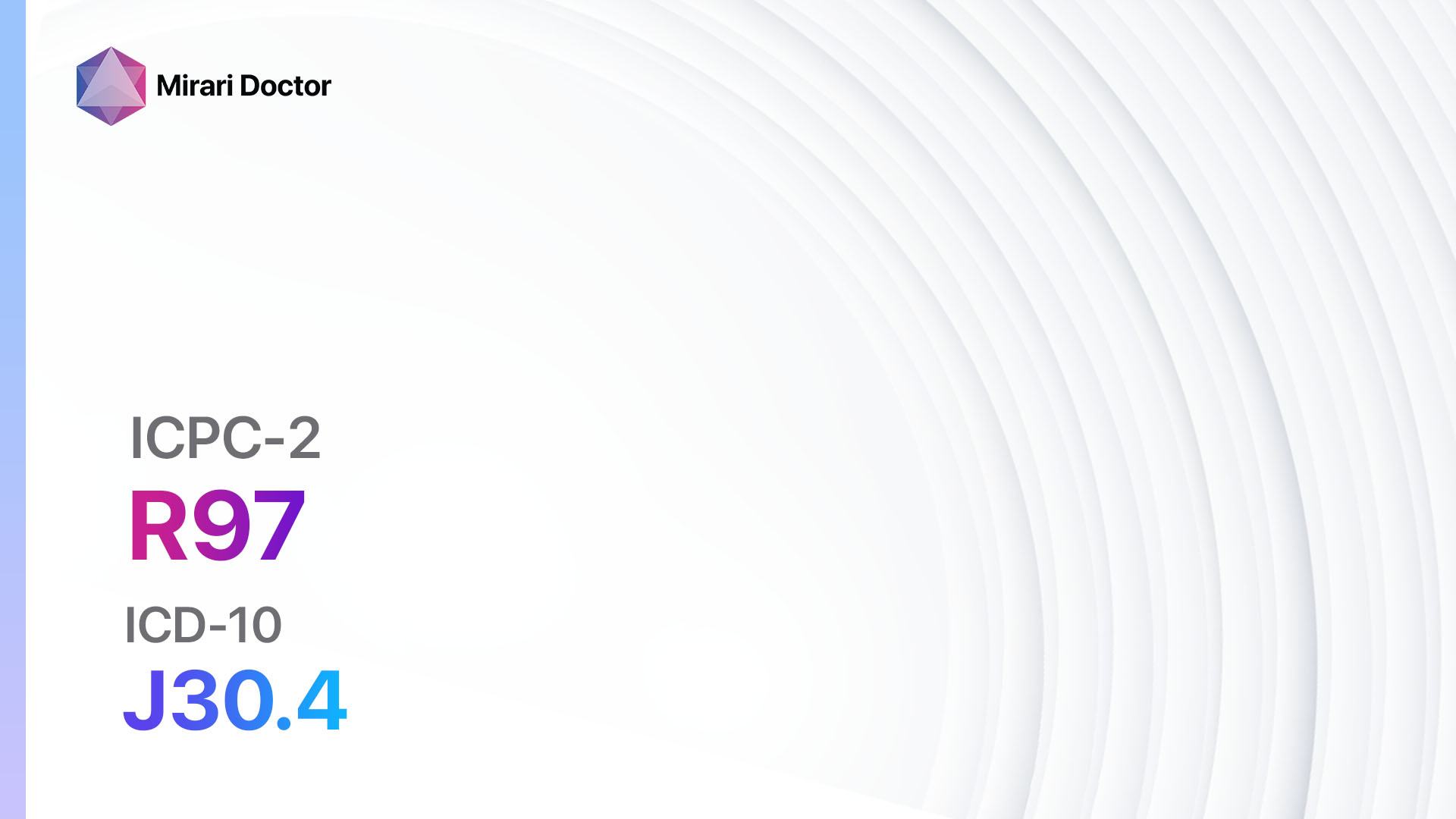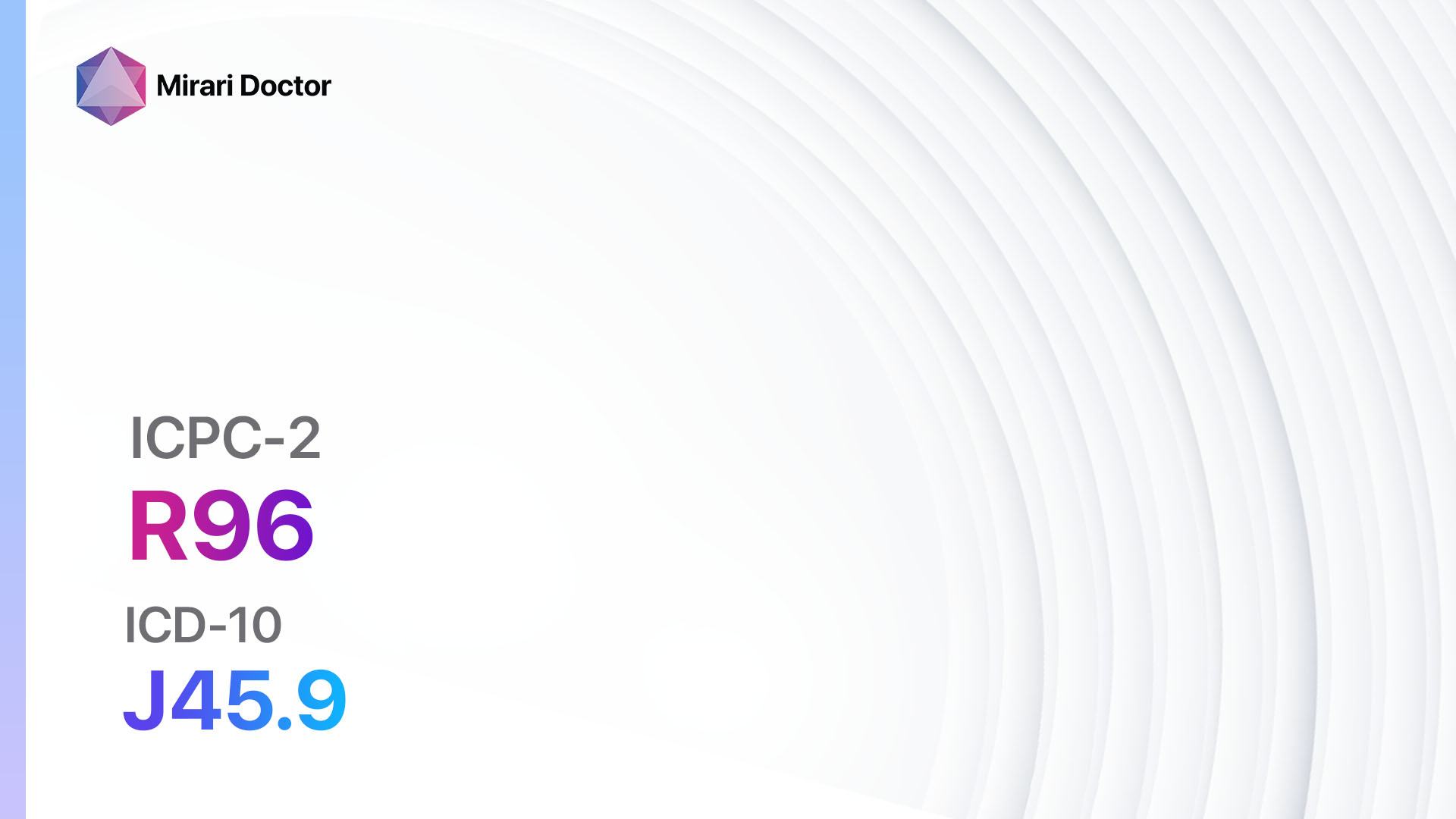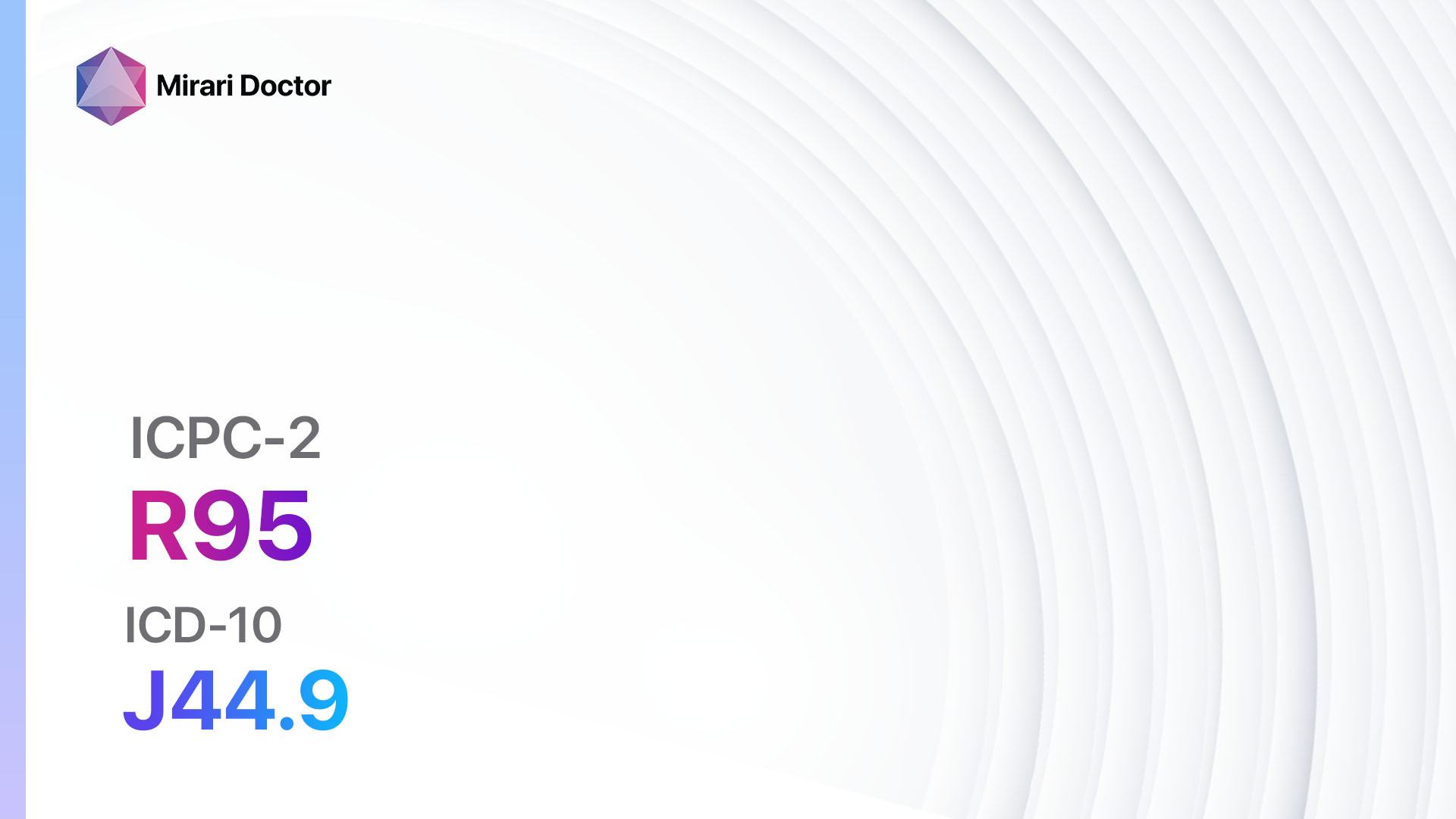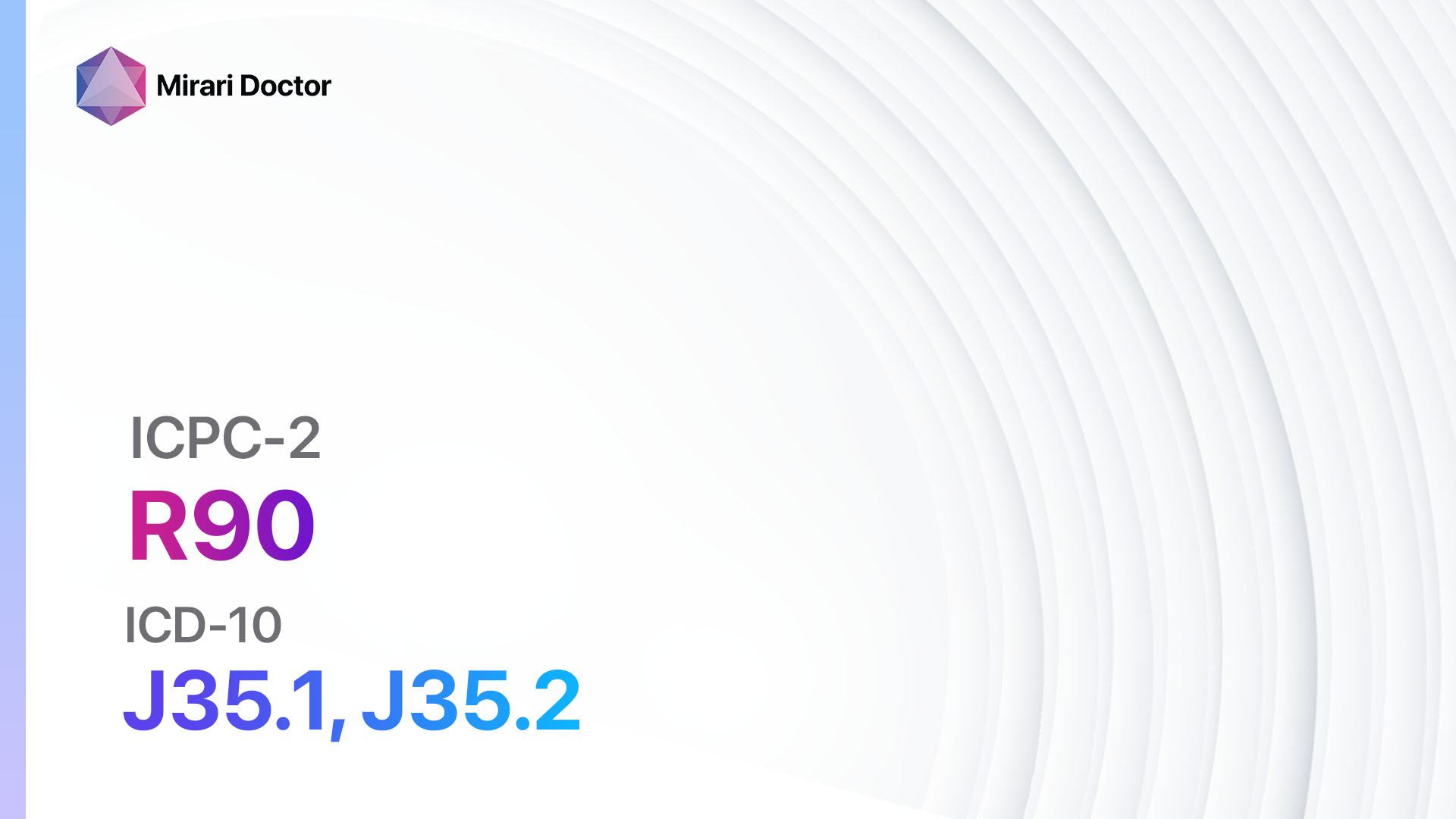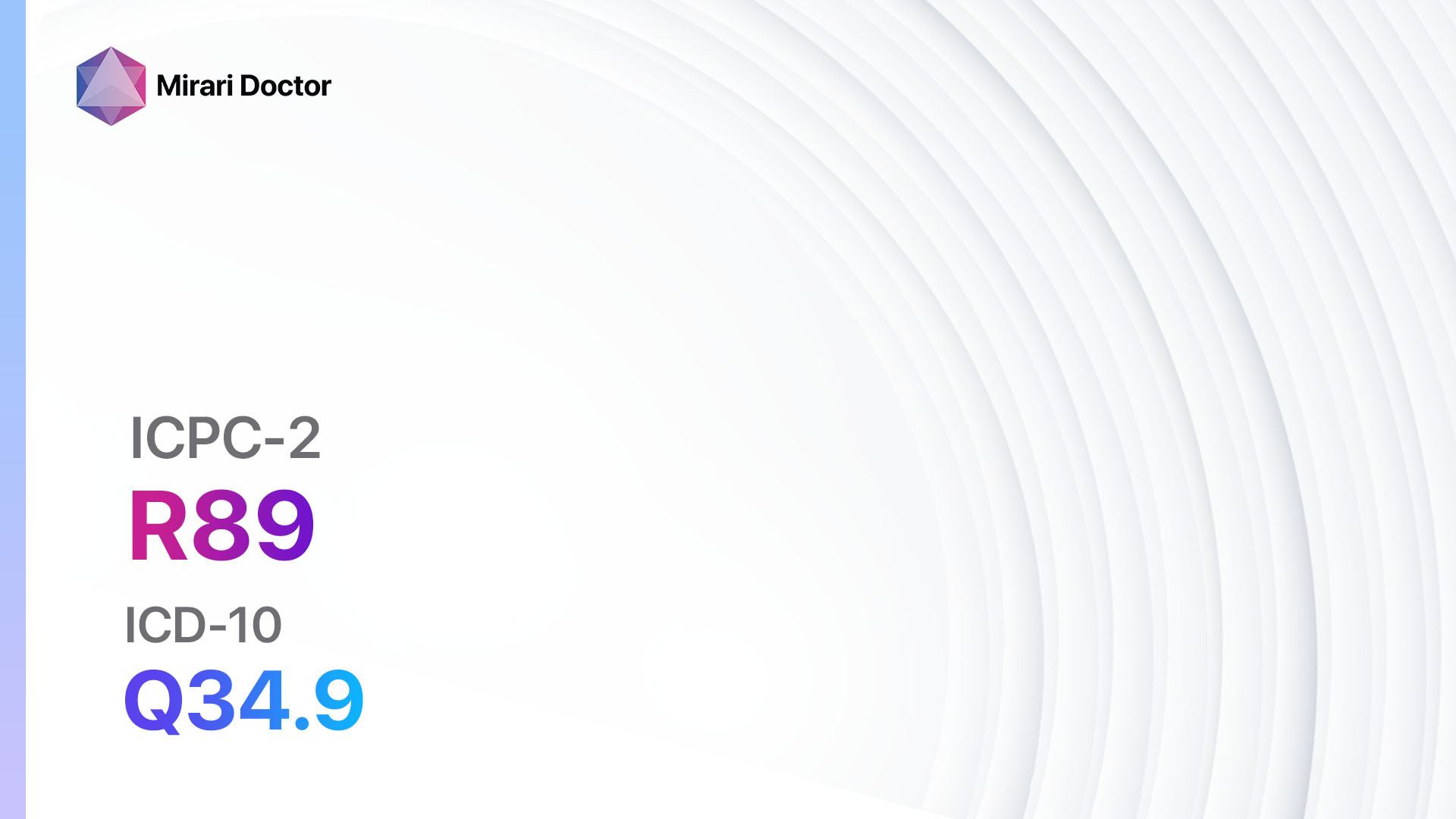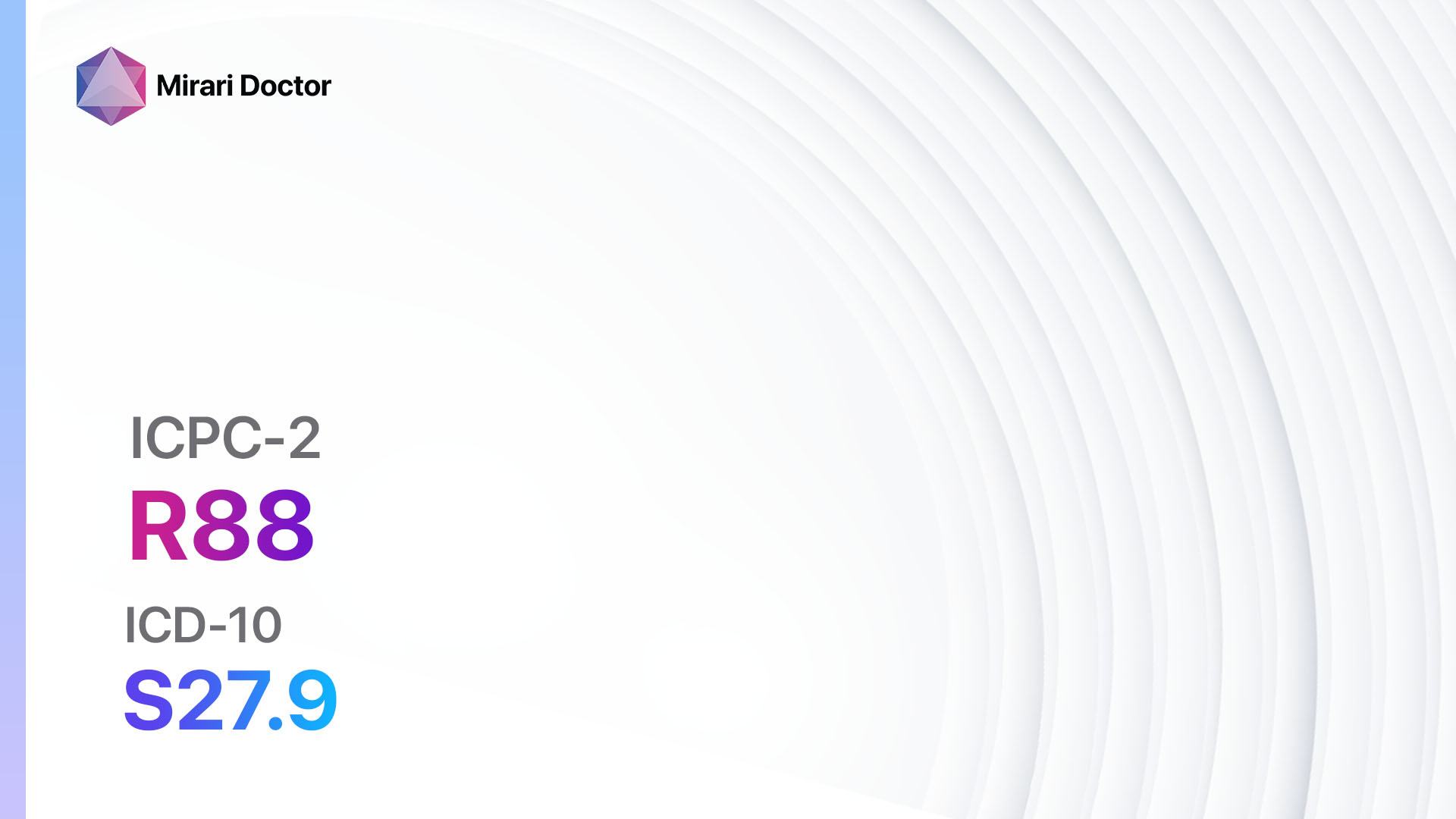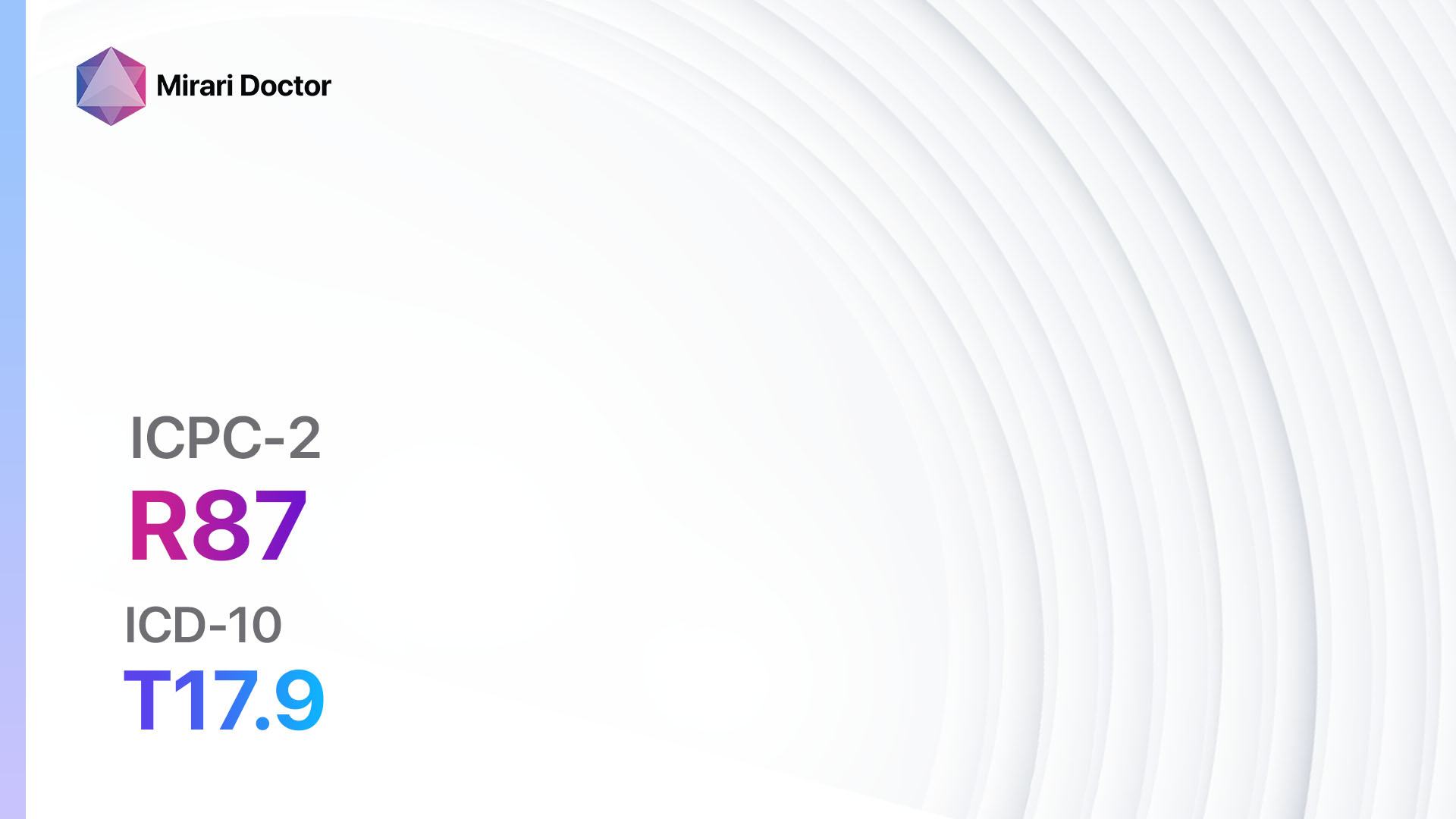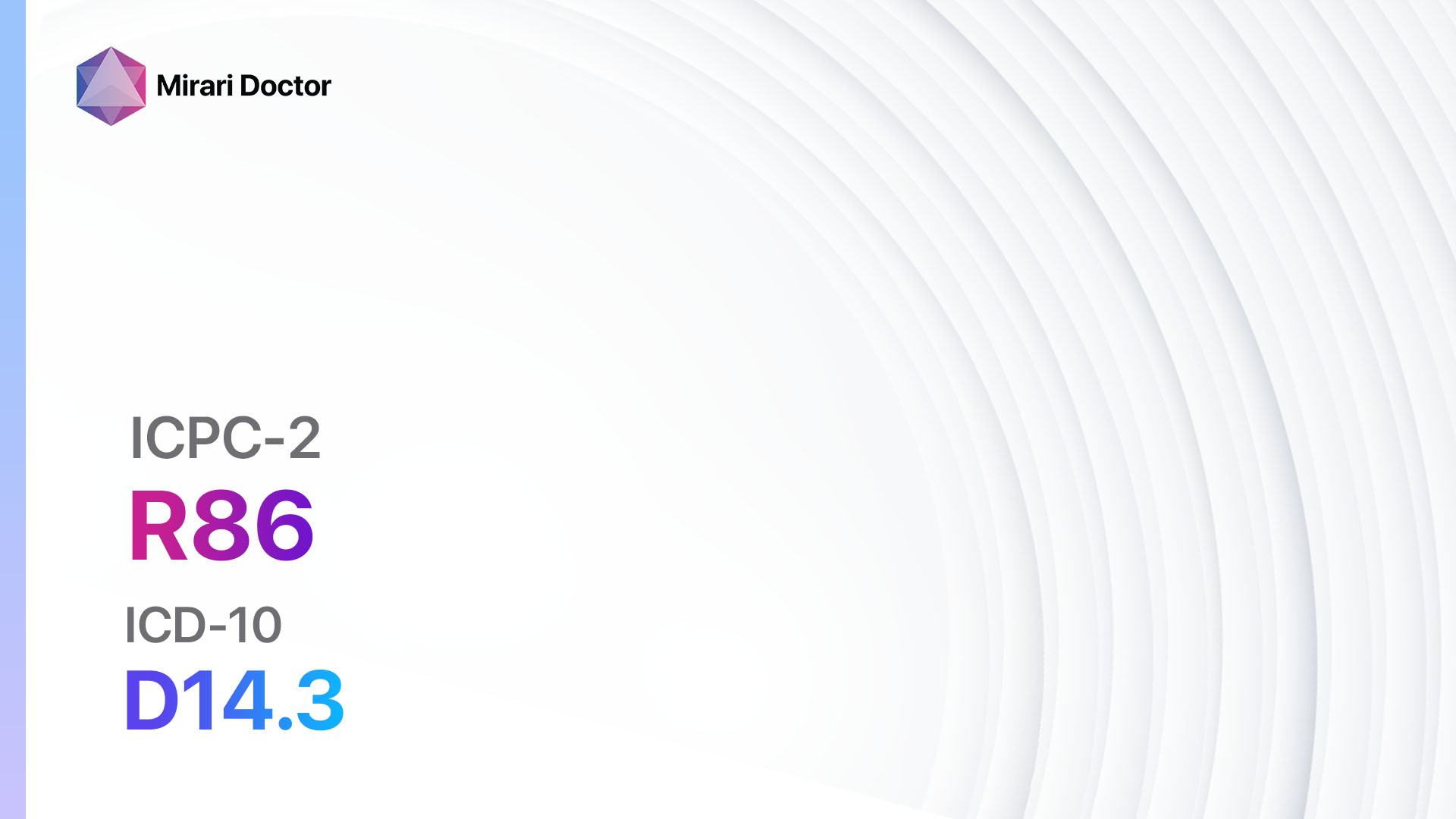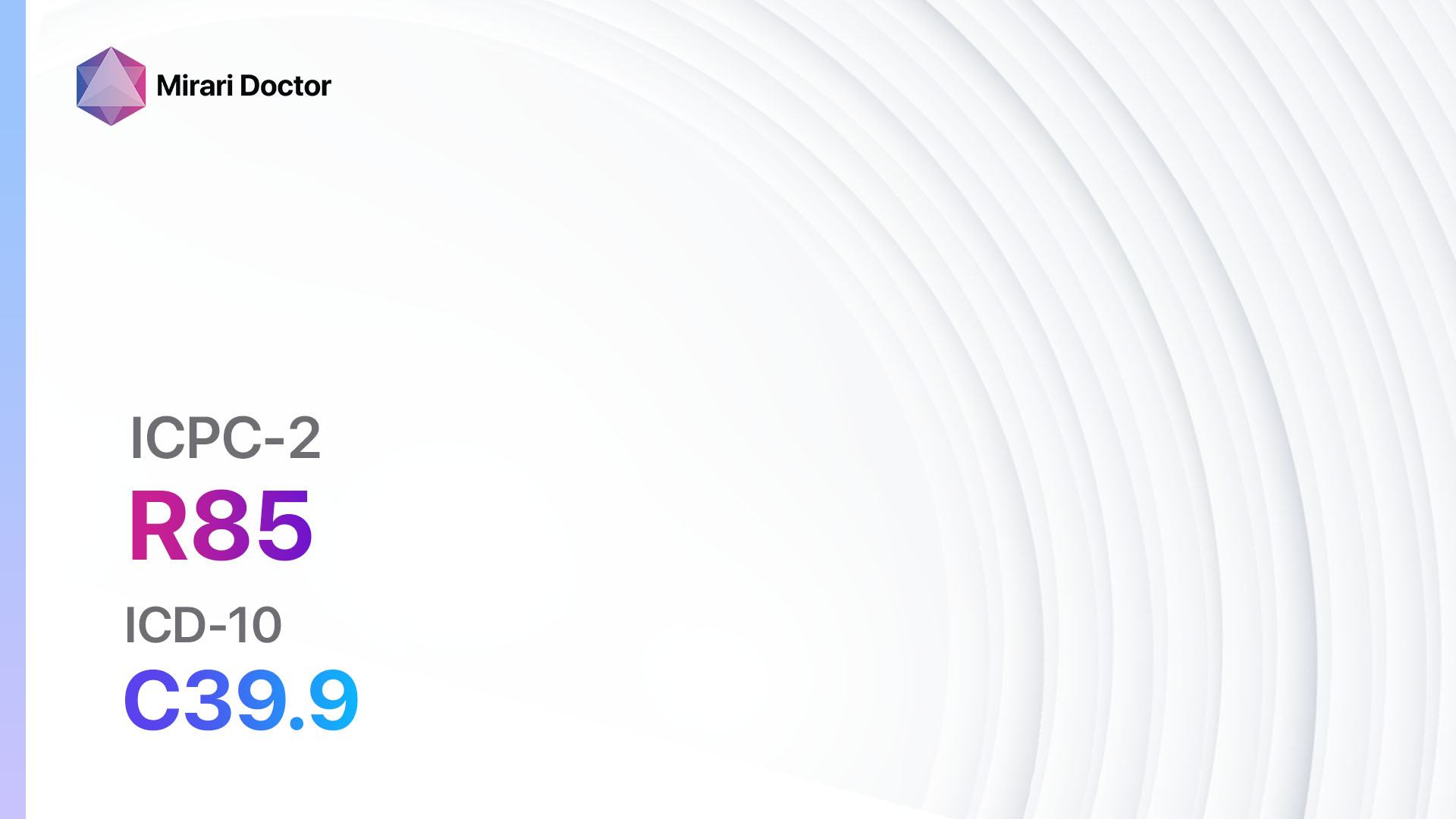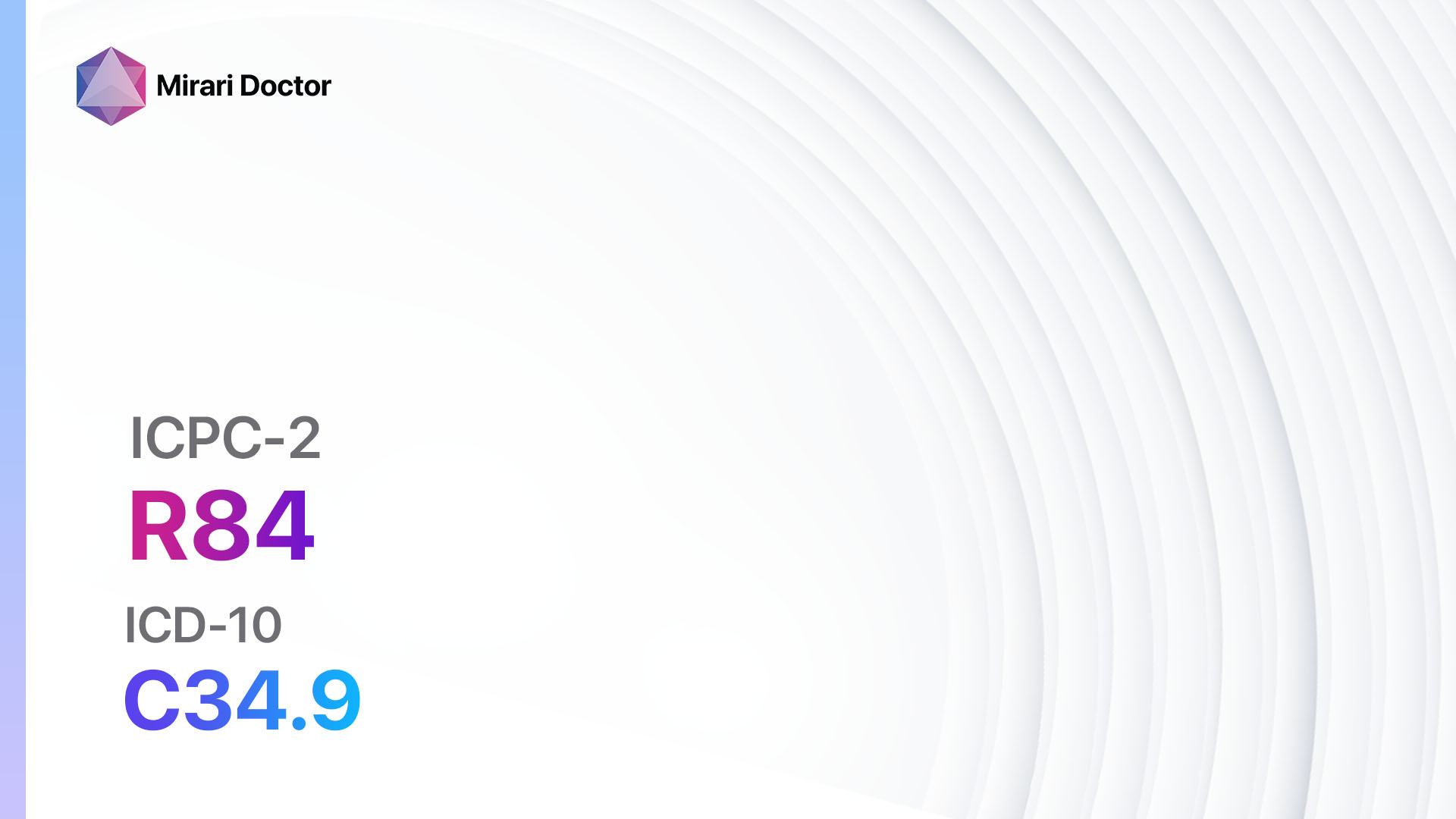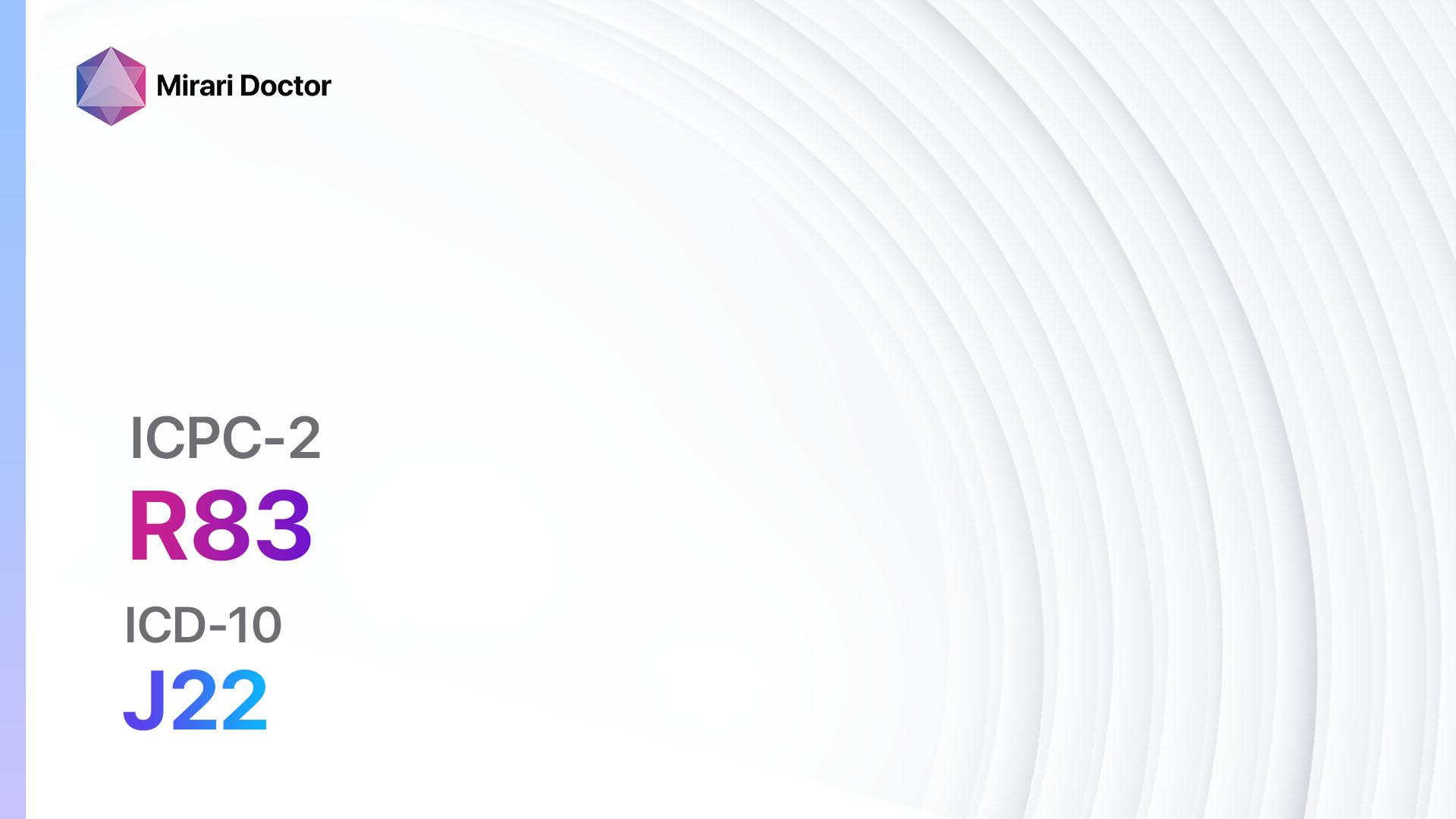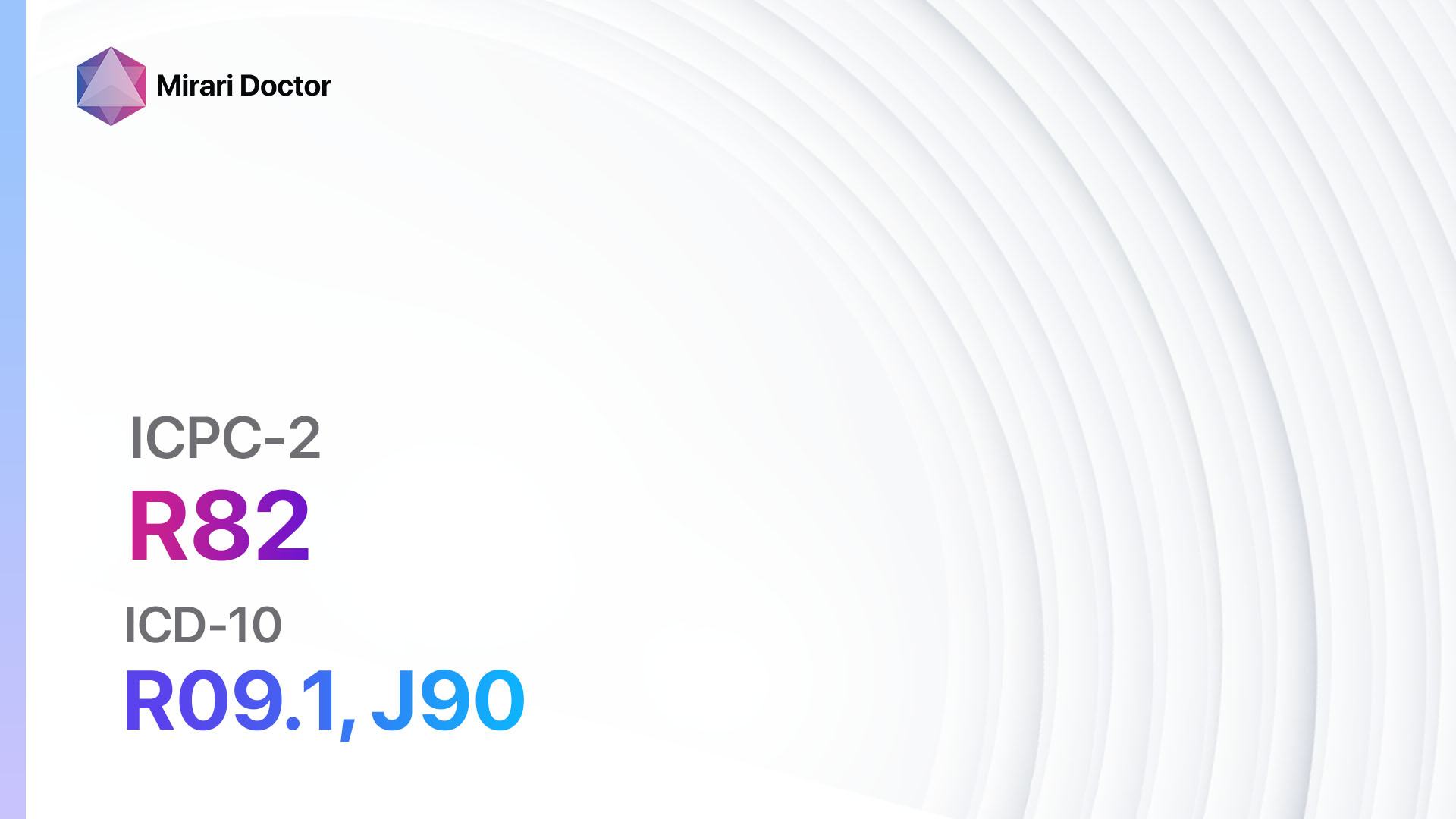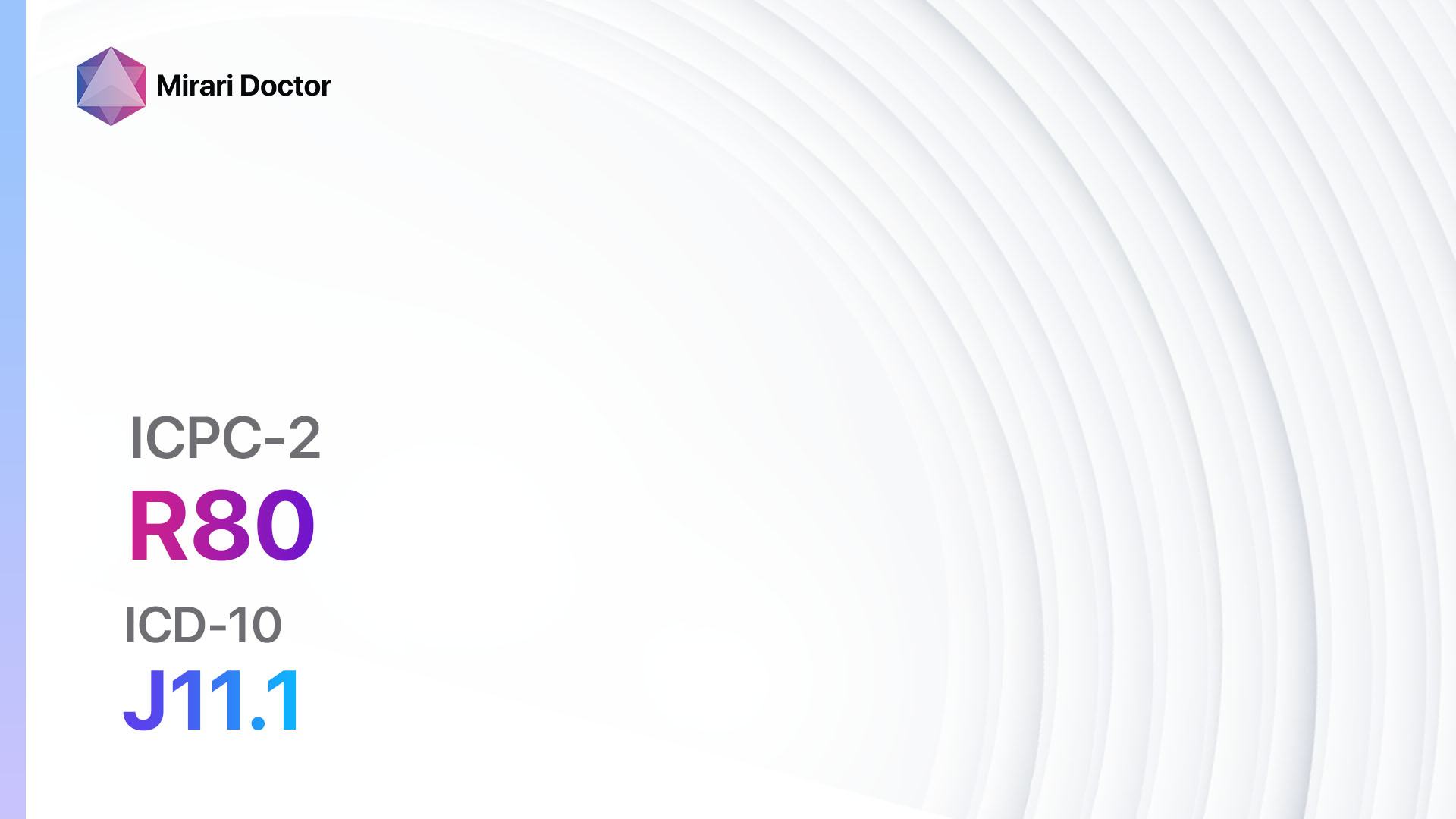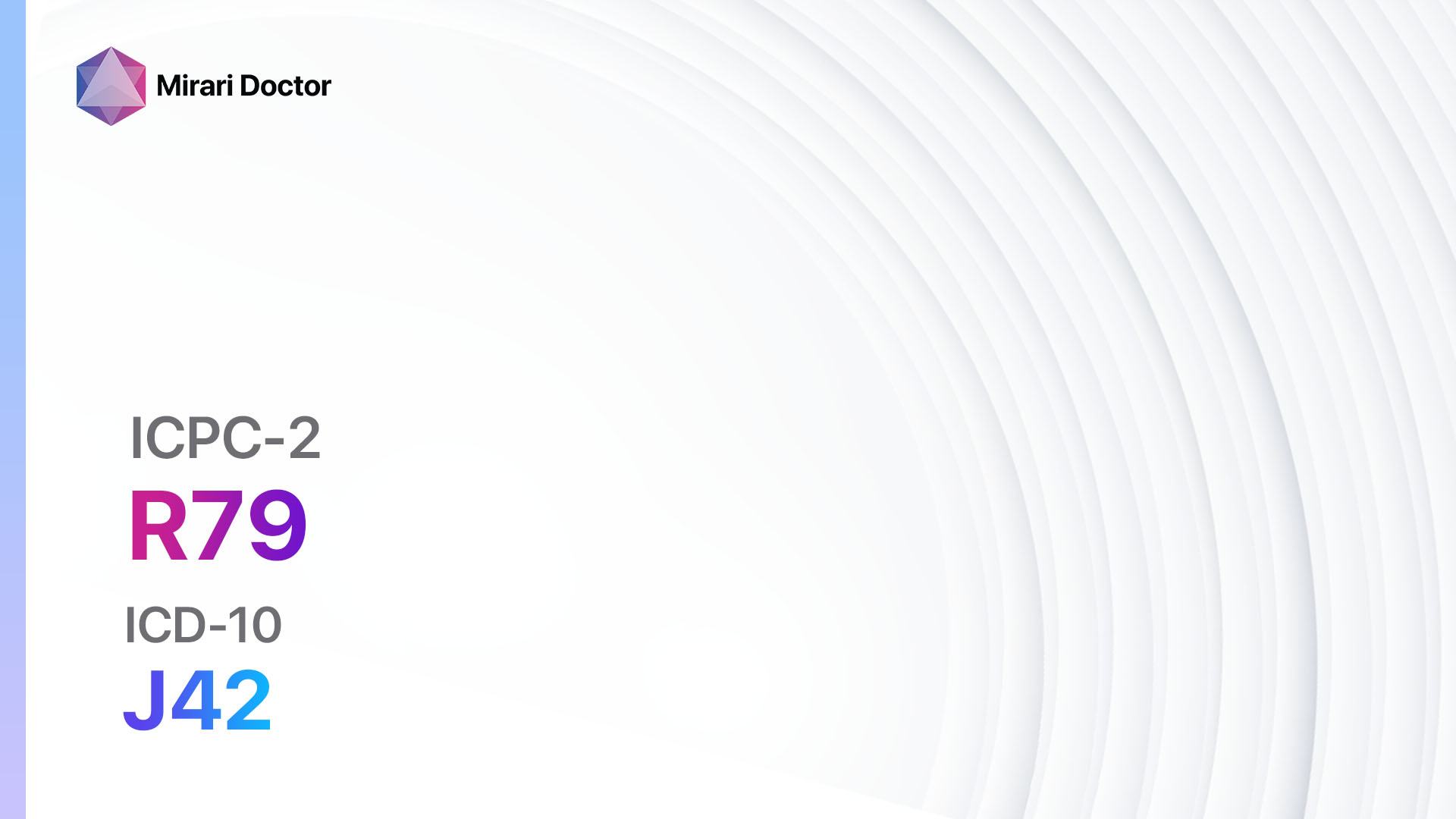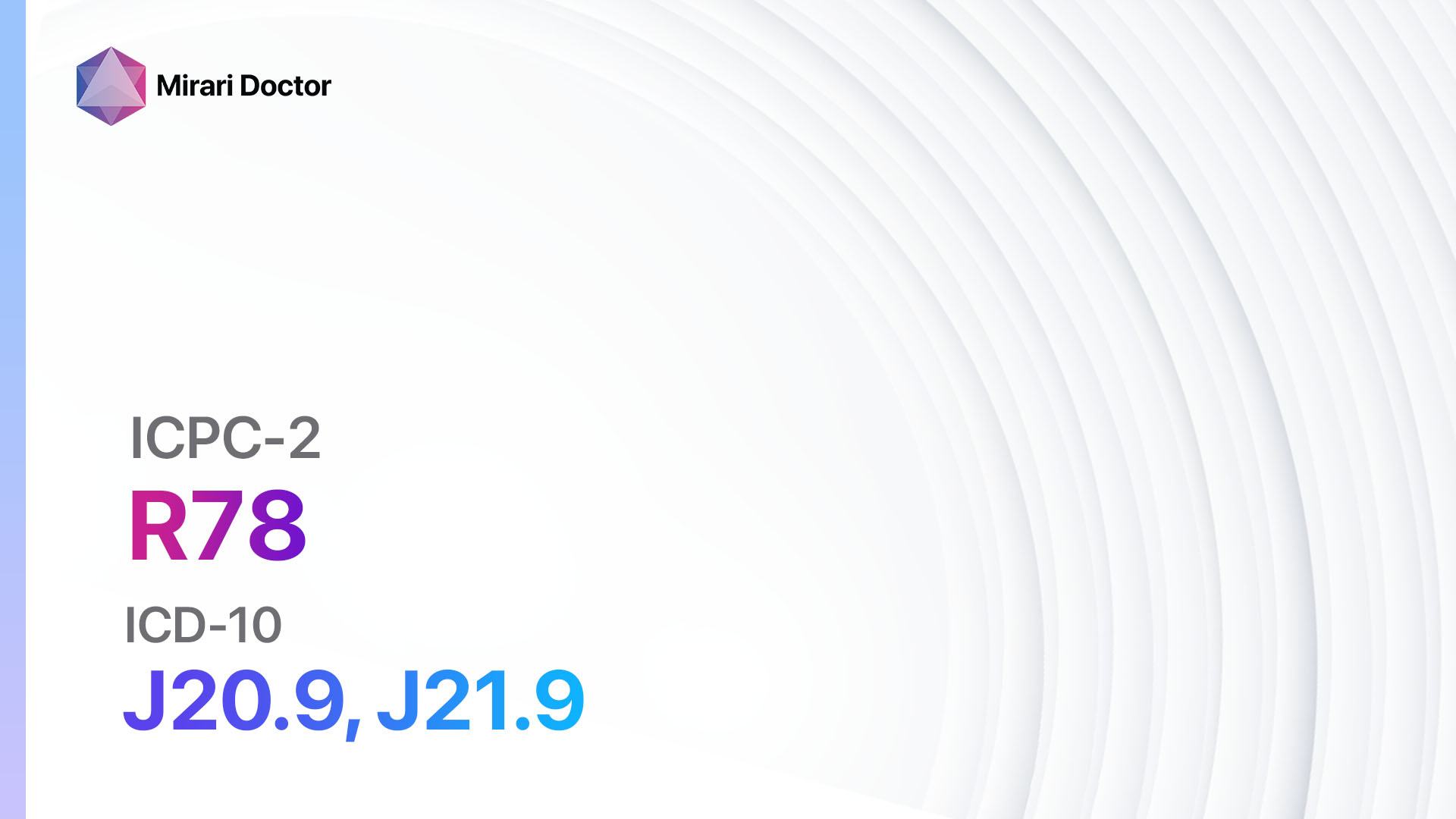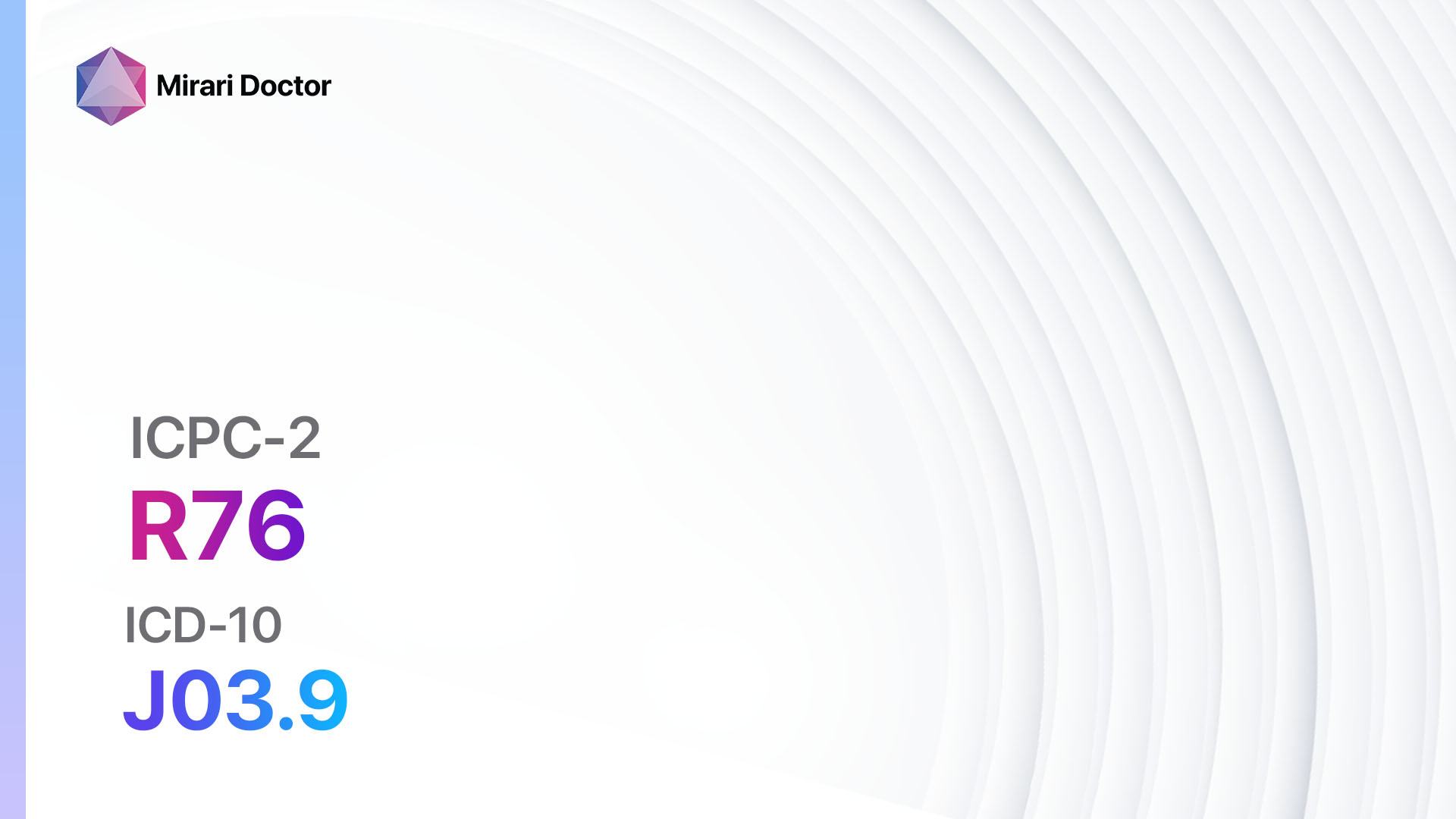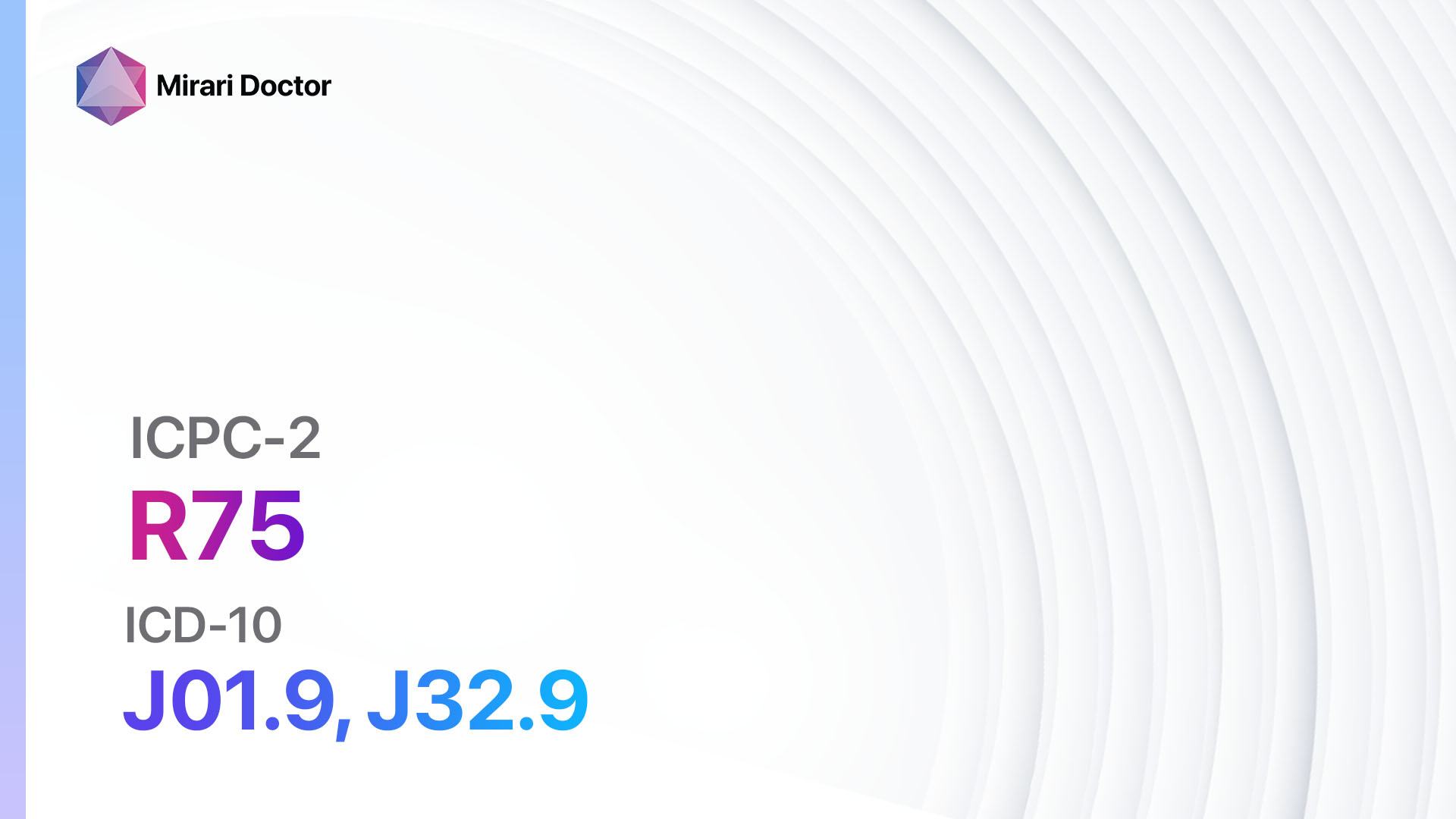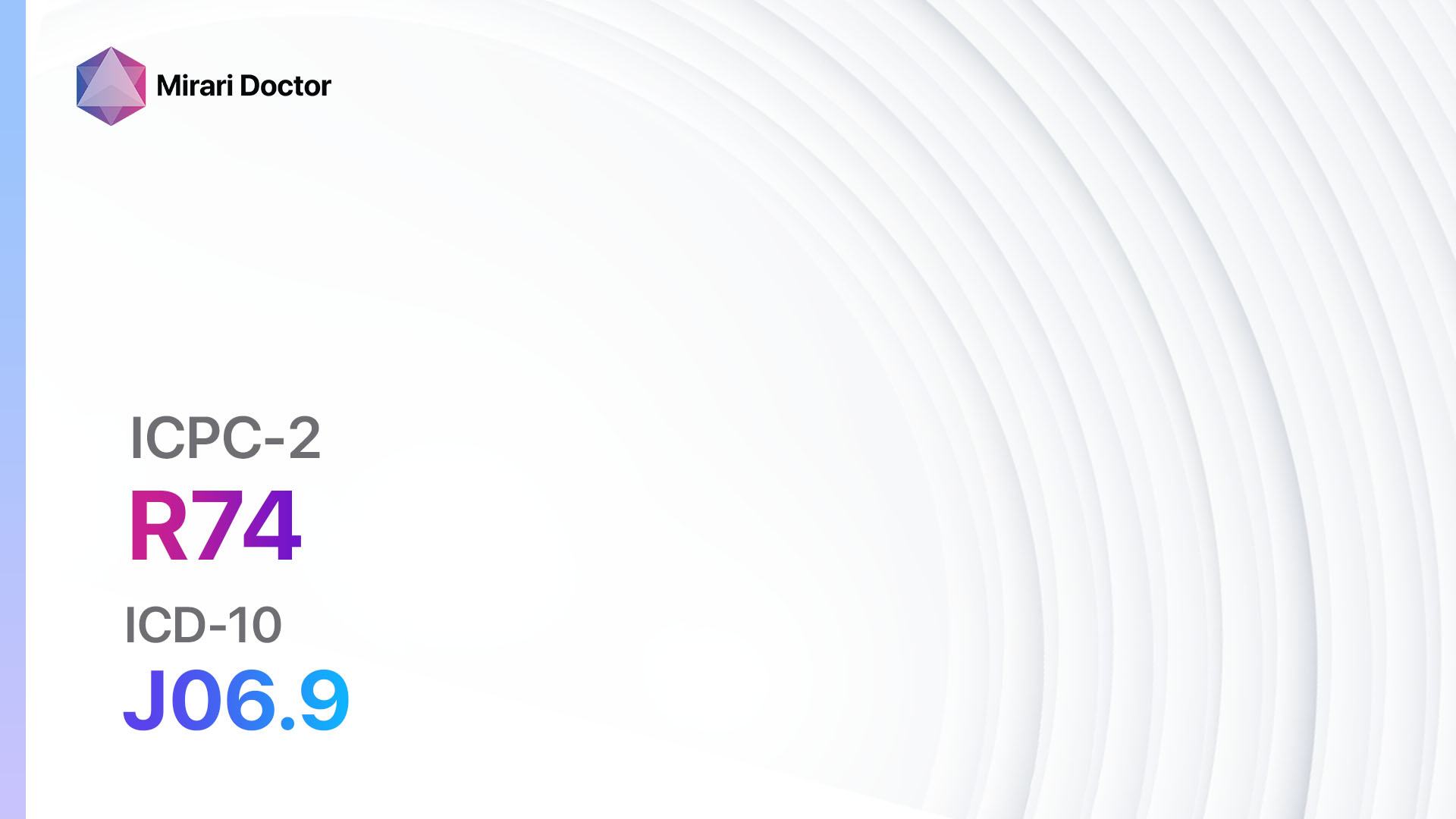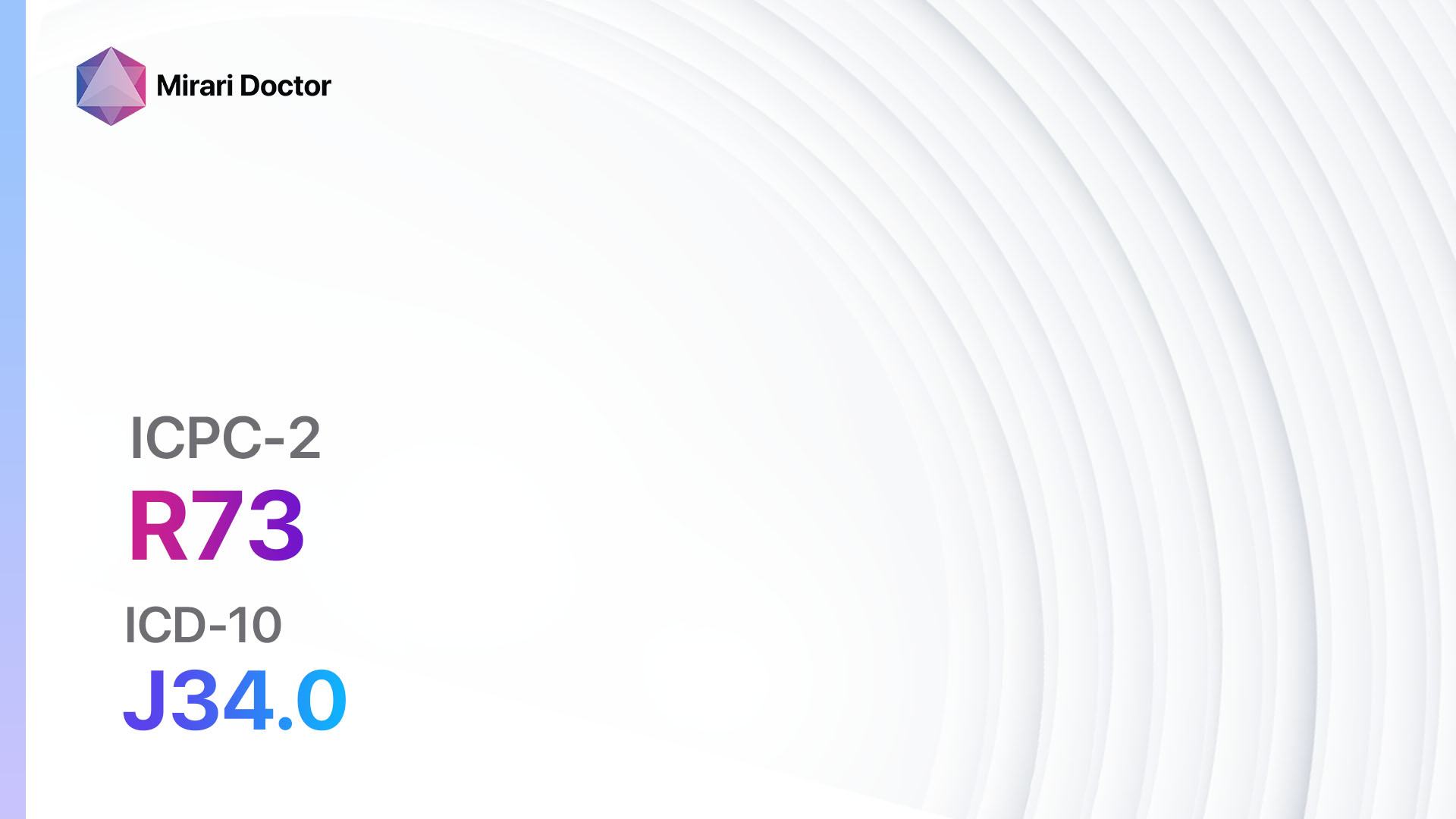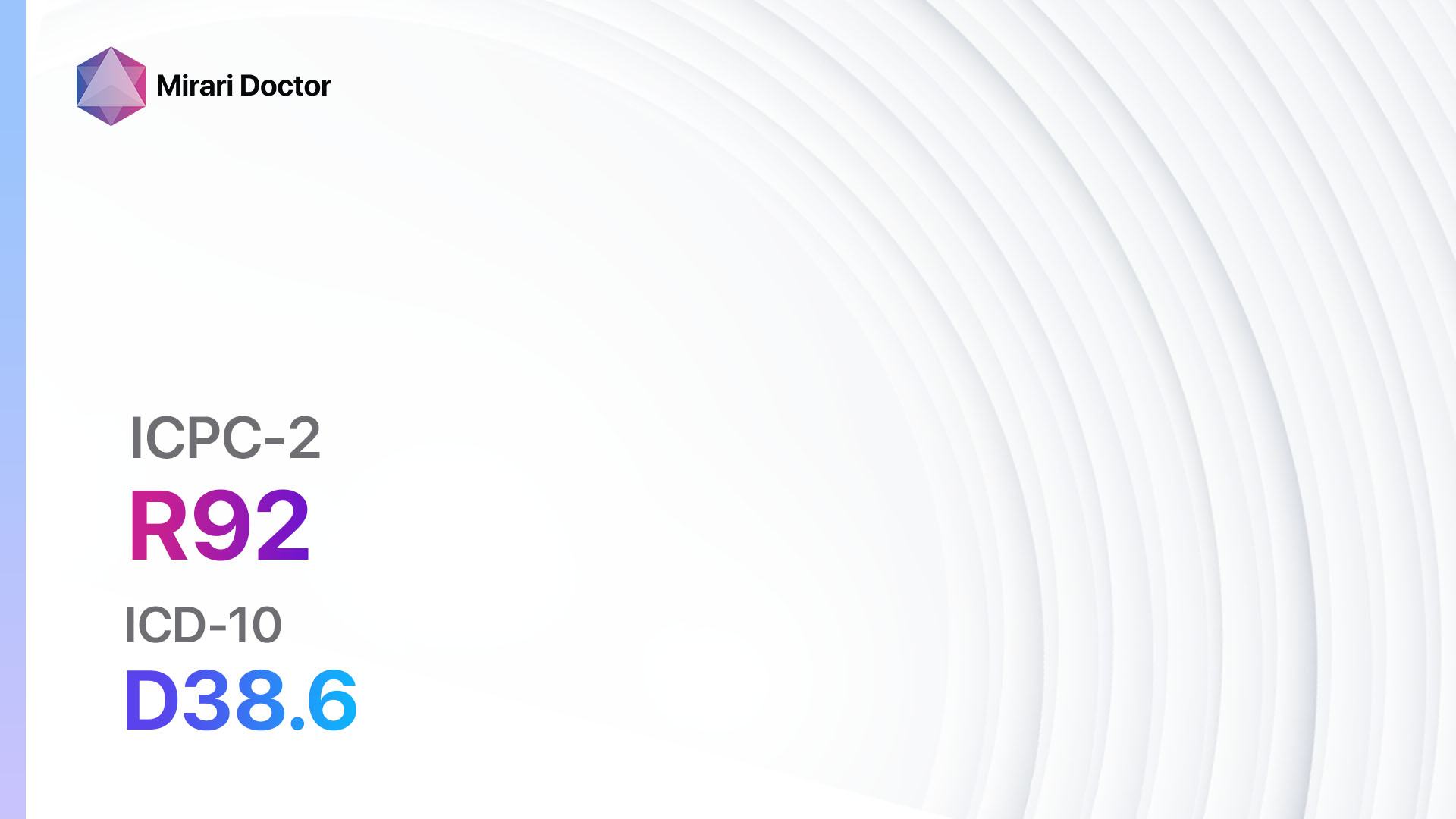
Introduction
Neoplasm respiratory unspecified refers to an unspecified respiratory neoplasm, which can include various types of tumors in the respiratory system. The aim of this guide is to provide a comprehensive overview of the condition, including its symptoms, causes, diagnostic steps, possible interventions, and patient education.[1]
Codes
- ICPC-2 Code: R92 Neoplasm respiratory unspecified
- ICD-10 Code: D38.6 Neoplasm of uncertain or unknown behaviour of respiratory organs[2]
Symptoms
- Cough: Persistent cough that may be accompanied by blood in sputum.
- Shortness of breath: Difficulty breathing, especially during physical activity.
- Chest pain: Pain or discomfort in the chest area.
- Wheezing: High-pitched whistling sound when breathing.
- Fatigue: Feeling tired or weak.
- Unexplained weight loss: Losing weight without trying.
- Hoarseness: Changes in voice, such as a raspy or strained voice.[3]
Causes
- Smoking: Tobacco smoke contains carcinogens that can lead to the development of respiratory neoplasms.
- Exposure to secondhand smoke: Inhaling smoke from others’ cigarettes or tobacco products.
- Occupational exposure: Working in environments with exposure to asbestos, radon, or certain chemicals.
- Air pollution: Breathing in pollutants from vehicle exhaust, industrial emissions, or other sources.
- Genetic factors: Certain genetic mutations may increase the risk of developing respiratory neoplasms.[4]
Diagnostic Steps
Medical History
- Gather information about the patient’s smoking history, including duration and intensity.
- Ask about occupational exposure to carcinogens or other respiratory irritants.
- Inquire about any family history of respiratory neoplasms.
- Assess the presence and duration of symptoms, such as cough, shortness of breath, and chest pain.
- Determine if the patient has any risk factors, such as a history of smoking or exposure to carcinogens.[5]
Physical Examination
- Auscultate the lungs to assess for abnormal breath sounds, such as wheezing or crackles.
- Palpate the chest to check for any lumps or masses.
- Examine the neck and throat for any signs of enlarged lymph nodes or hoarseness.
- Assess vital signs, including respiratory rate and oxygen saturation levels.[6]
Laboratory Tests
- Complete blood count (CBC): To check for any abnormalities, such as anemia or elevated white blood cell count.
- Blood chemistry panel: To evaluate organ function and assess for any metabolic abnormalities.
- Tumor markers: Blood tests to detect specific markers associated with respiratory neoplasms, such as carcinoembryonic antigen (CEA) or squamous cell carcinoma antigen (SCCA).
- Genetic testing: In some cases, genetic testing may be recommended to identify specific mutations associated with respiratory neoplasms.[7]
Diagnostic Imaging
- Chest X-ray: To visualize the lungs and identify any abnormalities, such as masses or nodules.
- Computed tomography (CT) scan: Provides detailed cross-sectional images of the chest to assess the size, location, and extent of the neoplasm.
- Magnetic resonance imaging (MRI): May be used to further evaluate the neoplasm and surrounding structures.
- Positron emission tomography (PET) scan: Helps determine if the neoplasm has spread to other parts of the body.[8]
Other Tests
- Bronchoscopy: A thin, flexible tube with a camera is inserted through the nose or mouth to examine the airways and collect tissue samples for biopsy.
- Biopsy: Removal of a small tissue sample for laboratory analysis to confirm the presence of a neoplasm and determine its type.
- Pulmonary function tests: Assess lung function and capacity to determine the impact of the neoplasm on respiratory function.
- Genetic testing: In some cases, genetic testing may be recommended to identify specific mutations associated with respiratory neoplasms.[9]
Follow-up and Patient Education
- Schedule regular follow-up appointments to monitor the progression of the neoplasm and assess treatment effectiveness.
- Provide education on the importance of smoking cessation and avoiding exposure to secondhand smoke.
- Discuss the potential benefits of a healthy lifestyle, including regular exercise and a balanced diet, in managing the neoplasm.
- Address any concerns or questions the patient may have regarding their condition and treatment options.[10]
Possible Interventions
Traditional Interventions
Medications:
Top 5 drugs for Neoplasm respiratory unspecified:
- Chemotherapy: Various chemotherapy drugs may be used to target and kill cancer cells. The specific drugs and treatment regimen will depend on the type and stage of the neoplasm.
- Cost: Varies depending on the specific drugs and treatment plan.
- Contraindications: Individual drug contraindications should be considered.
- Side effects: Nausea, vomiting, hair loss, fatigue, decreased blood cell counts.
- Severe side effects: Increased risk of infection, bleeding, organ damage.
- Drug interactions: Potential interactions with other medications should be evaluated.
- Warning: Regular monitoring of blood counts and organ function is necessary.
- Targeted therapy: Certain drugs target specific genetic mutations or proteins involved in the growth and spread of cancer cells.
- Cost: Varies depending on the specific drugs and treatment plan.
- Contraindications: Individual drug contraindications should be considered.
- Side effects: Fatigue, diarrhea, skin rash, liver toxicity.
- Severe side effects: Severe allergic reactions, heart problems, lung problems.
- Drug interactions: Potential interactions with other medications should be evaluated.
- Warning: Regular monitoring of organ function is necessary.
- Immunotherapy: Drugs that help the immune system recognize and attack cancer cells.
- Cost: Varies depending on the specific drugs and treatment plan.
- Contraindications: Individual drug contraindications should be considered.
- Side effects: Fatigue, flu-like symptoms, skin reactions, diarrhea.
- Severe side effects: Severe allergic reactions, inflammation of organs.
- Drug interactions: Potential interactions with other medications should be evaluated.
- Warning: Regular monitoring of organ function is necessary.
- Radiation therapy: High-energy beams are used to kill cancer cells or shrink tumors.
- Cost: Varies depending on the specific treatment plan and duration.
- Contraindications: Individual contraindications should be considered.
- Side effects: Fatigue, skin changes, hair loss, nausea, diarrhea.
- Severe side effects: Damage to healthy tissues, secondary malignancies.
- Drug interactions: Potential interactions with other medications should be evaluated.
- Warning: Regular monitoring of treatment response and side effects is necessary.
- Surgery: Surgical removal of the neoplasm may be recommended in certain cases.
- Cost: Varies depending on the specific procedure and hospital.
- Contraindications: Individual contraindications should be considered.
- Side effects: Pain, infection, bleeding, scarring.
- Severe side effects: Damage to surrounding structures, complications from anesthesia.
- Drug interactions: Potential interactions with other medications should be evaluated.
- Warning: Post-operative care and monitoring are necessary.
Surgical Procedures:
- Lobectomy: Removal of a lobe of the lung.
- Cost: $20,000 to $40,000.
- Pneumonectomy: Removal of an entire lung.
- Cost: $30,000 to $50,000.
- Wedge resection: Removal of a small, wedge-shaped portion of the lung.
- Cost: $15,000 to $30,000.
- Mediastinoscopy: Examination of the mediastinum and lymph nodes for staging purposes.
- Cost: $5,000 to $10,000.
- Video-assisted thoracoscopic surgery (VATS): Minimally invasive surgery using small incisions and a camera to remove the neoplasm.
- Cost: $15,000 to $30,000.
Alternative Interventions
- Acupuncture: May help manage symptoms such as pain and fatigue.
- Cost: $60-$120 per session.
- Herbal supplements: Some herbal supplements, such as green tea extract or curcumin, may have potential benefits in cancer management.
- Cost: Varies depending on the specific supplement.
- Mind-body techniques: Practices such as meditation, yoga, or tai chi may help reduce stress and improve overall well-being.
- Cost: Varies depending on the specific program or class.
- Nutritional therapy: Working with a registered dietitian to develop a personalized nutrition plan that supports overall health and well-being.
- Cost: Varies depending on the specific services and duration of consultation.
- Supportive care: Engaging in support groups, counseling, or therapy to address emotional and psychological needs.
- Cost: Varies depending on the specific services and duration of therapy.
Lifestyle Interventions
- Smoking cessation: Quitting smoking is crucial in reducing the risk of developing respiratory neoplasms and improving treatment outcomes.
- Cost: Varies depending on the specific smoking cessation program or aids used.
- Healthy diet: Consuming a balanced diet rich in fruits, vegetables, whole grains, and lean proteins can support overall health and well-being.
- Cost: Varies depending on individual food choices and dietary preferences.
- Regular exercise: Engaging in regular physical activity can help improve cardiovascular health and overall well-being.
- Cost: Varies depending on individual preferences and access to exercise facilities or programs.
- Stress management: Practicing stress-reducing techniques, such as deep breathing exercises or mindfulness meditation, can help improve quality of life.
- Cost: Varies depending on the specific stress management program or techniques used.
- Adequate rest and sleep: Prioritizing sufficient rest and sleep can support overall health and well-being.
- Cost: Varies depending on individual preferences and access to sleep aids or relaxation techniques.
It is important to note that the cost ranges provided are approximate and may vary depending on the location and availability of the interventions. It is recommended to consult with healthcare professionals for personalized treatment options and cost estimates.
Mirari Cold Plasma Alternative Intervention
Understanding Mirari Cold Plasma
- Safe and Non-Invasive Treatment:Mirari Cold Plasma is a safe and non-invasive treatment option for various skin conditions. It does not require incisions, minimizing the risk of scarring, bleeding, or tissue damage.
- Efficient Extraction of Foreign Bodies:Mirari Cold Plasma facilitates the removal of foreign bodies from the skin by degrading and dissociating organic matter, allowing easier access and extraction.
- Pain Reduction and Comfort:Mirari Cold Plasma has a local analgesic effect, providing pain relief during the treatment, making it more comfortable for the patient.
- Reduced Risk of Infection:Mirari Cold Plasma has antimicrobial properties, effectively killing bacteria and reducing the risk of infection.
- Accelerated Healing and Minimal Scarring: Mirari Cold Plasma stimulates wound healing and tissue regeneration, reducing healing time and minimizing the formation of scars.
Mirari Cold Plasma Prescription
Video instructions for using Mirari Cold Plasma Device – R92 Neoplasm respiratory unspecified (ICD-10:D38.6)
| Mild | Moderate | Severe |
| Mode setting: 1 (Infection) Location: 0 (Localized) Morning: 15 minutes, Evening: 15 minutes | Mode setting: 1 (Infection) Location: 0 (Localized) Morning: 30 minutes, Lunch: 30 minutes, Evening: 30 minutes | Mode setting: 1 (Infection) Location: 0 (Localized) Morning: 30 minutes, Lunch: 30 minutes, Evening: 30 minutes |
| Mode setting: 2 (Wound Healing) Location: 0 (Localized) Morning: 15 minutes, Evening: 15 minutes | Mode setting: 2 (Wound Healing) Location: 0 (Localized) Morning: 30 minutes, Lunch: 30 minutes, Evening: 30 minutes | Mode setting: 2 (Wound Healing) Location: 0 (Localized) Morning: 30 minutes, Lunch: 30 minutes, Evening: 30 minutes |
| Modesetting:3 (Antiviral Therapy) Location:5 (Lungs) Morning:15minutes, Evening:15minutes | Modesetting:3 (Antiviral Therapy) Location:5 (Lungs) Morning:30minutes, Lunch:30minutes, Evening:30minutes | Modesetting:3 (Antiviral Therapy) Location:5 (Lungs) Morning:30minutes, Lunch:30minutes, Evening:30minutes |
| Mode setting:7 (Immunotherapy) Location:1 (Sacrum) Morning: 15 minutes, Evening: 15 minutes | Mode setting:7 (Immunotherapy) Location:1 (Sacrum) Morning: 30 minutes, Lunch: 30 minutes, Evening: 30 minutes | Mode setting:7 (Immunotherapy) Location:1 (Sacrum) Morning: 30 minutes, Lunch: 30 minutes, Evening: 30 minutes |
| Total Morning:60minutesapprox.$10USD, Evening:60minutesapprox.$10USD | Total Morning:120minutesapprox.$20USD, Lunch:120minutesapprox. $20 USD, Evening:120minutesapprox. $20 USD, | Total Morning:120minutesapprox.$20USD, Lunch:120minutesapprox. $20 USD, Evening:120minutesapprox. $20 USD, |
| Usualtreatmentfor7-60daysapprox.$140USD–$1200USD | Usualtreatmentfor6-8weeksapprox.$2,520USD–$3,360USD | Usualtreatmentfor3-6monthsapprox.$5,400USD–$10,800USD |
 |
|
Use the Mirari Cold Plasma device to treat Neoplasm respiratory unspecified effectively.
WARNING: MIRARI COLD PLASMA IS DESIGNED FOR THE HUMAN BODY WITHOUT ANY ARTIFICIAL OR THIRD PARTY PRODUCTS. USE OF OTHER PRODUCTS IN COMBINATION WITH MIRARI COLD PLASMA MAY CAUSE UNPREDICTABLE EFFECTS, HARM OR INJURY. PLEASE CONSULT A MEDICAL PROFESSIONAL BEFORE COMBINING ANY OTHER PRODUCTS WITH USE OF MIRARI.
Step 1: Cleanse the Skin
- Start by cleaning the affected area of the skin with a gentle cleanser or mild soap and water. Gently pat the area dry with a clean towel.
Step 2: Prepare the Mirari Cold Plasma device
- Ensure that the Mirari Cold Plasma device is fully charged or has fresh batteries as per the manufacturer’s instructions. Make sure the device is clean and in good working condition.
- Switch on the Mirari device using the power button or by following the specific instructions provided with the device.
- Some Mirari devices may have adjustable settings for intensity or treatment duration. Follow the manufacturer’s instructions to select the appropriate settings based on your needs and the recommended guidelines.
Step 3: Apply the Device
- Place the Mirari device in direct contact with the affected area of the skin. Gently glide or hold the device over the skin surface, ensuring even coverage of the area experiencing.
- Slowly move the Mirari device in a circular motion or follow a specific pattern as indicated in the user manual. This helps ensure thorough treatment coverage.
Step 4: Monitor and Assess:
- Keep track of your progress and evaluate the effectiveness of the Mirari device in managing your Neoplasm respiratory unspecified. If you have any concerns or notice any adverse reactions, consult with your health care professional.
Note
This guide is for informational purposes only and should not replace the advice of a medical professional. Always consult with your healthcare provider or a qualified medical professional for personal advice, diagnosis, or treatment. Do not solely rely on the information presented here for decisions about your health. Use of this information is at your own risk. The authors of this guide, nor any associated entities or platforms, are not responsible for any potential adverse effects or outcomes based on the content.
Mirari Cold Plasma System Disclaimer
- Purpose: The Mirari Cold Plasma System is a Class 2 medical device designed for use by trained healthcare professionals. It is registered for use in Thailand and Vietnam. It is not intended for use outside of these locations.
- Informational Use: The content and information provided with the device are for educational and informational purposes only. They are not a substitute for professional medical advice or care.
- Variable Outcomes: While the device is approved for specific uses, individual outcomes can differ. We do not assert or guarantee specific medical outcomes.
- Consultation: Prior to utilizing the device or making decisions based on its content, it is essential to consult with a Certified Mirari Tele-Therapist and your medical healthcare provider regarding specific protocols.
- Liability: By using this device, users are acknowledging and accepting all potential risks. Neither the manufacturer nor the distributor will be held accountable for any adverse reactions, injuries, or damages stemming from its use.
- Geographical Availability: This device has received approval for designated purposes by the Thai and Vietnam FDA. As of now, outside of Thailand and Vietnam, the Mirari Cold Plasma System is not available for purchase or use.
References
- Bray F, Ferlay J, Soerjomataram I, Siegel RL, Torre LA, Jemal A. Global cancer statistics 2018: GLOBOCAN estimates of incidence and mortality worldwide for 36 cancers in 185 countries. CA Cancer J Clin. 2018;68(6):394-424.
- World Health Organization. International Statistical Classification of Diseases and Related Health Problems, 10th Revision (ICD-10). Geneva: WHO; 2019.
- Latimer KM, Mott TF. Lung cancer: diagnosis, treatment principles, and screening. Am Fam Physician. 2015;91(4):250-256.
- Alberg AJ, Brock MV, Ford JG, Samet JM, Spivack SD. Epidemiology of lung cancer: Diagnosis and management of lung cancer, 3rd ed: American College of Chest Physicians evidence-based clinical practice guidelines. Chest. 2013;143(5 Suppl):e1S-e29S.
- Rivera MP, Mehta AC, Wahidi MM. Establishing the diagnosis of lung cancer: Diagnosis and management of lung cancer, 3rd ed: American College of Chest Physicians evidence-based clinical practice guidelines. Chest. 2013;143(5 Suppl):e142S-e165S.
- Spiro SG, Gould MK, Colice GL; American College of Chest Physicians. Initial evaluation of the patient with lung cancer: symptoms, signs, laboratory tests, and paraneoplastic syndromes: ACCP evidenced-based clinical practice guidelines (2nd edition). Chest. 2007;132(3 Suppl):149S-160S.
- Grunnet M, Sorensen JB. Carcinoembryonic antigen (CEA) as tumor marker in lung cancer. Lung Cancer. 2012;76(2):138-143.
- Nair VS, Sundaram V, Desai M, Gould MK. Accuracy of models to identify lung nodule cancer risk in the National Lung Screening Trial. Am J Respir Crit Care Med. 2018;197(9):1220-1223.
- Lindeman NI, Cagle PT, Aisner DL, et al. Updated Molecular Testing Guideline for the Selection of Lung Cancer Patients for Treatment With Targeted Tyrosine Kinase Inhibitors: Guideline From the College of American Pathologists, the International Association for the Study of Lung Cancer, and the Association for Molecular Pathology. J Mol Diagn. 2018;20(2):129-159.
- Postmus PE, Kerr KM, Oudkerk M, et al. Early and locally advanced non-small-cell lung cancer (NSCLC): ESMO Clinical Practice Guidelines for diagnosis, treatment and follow-up. Ann Oncol. 2017;28(suppl_4):iv1-iv21.
Related articles
Made in USA


